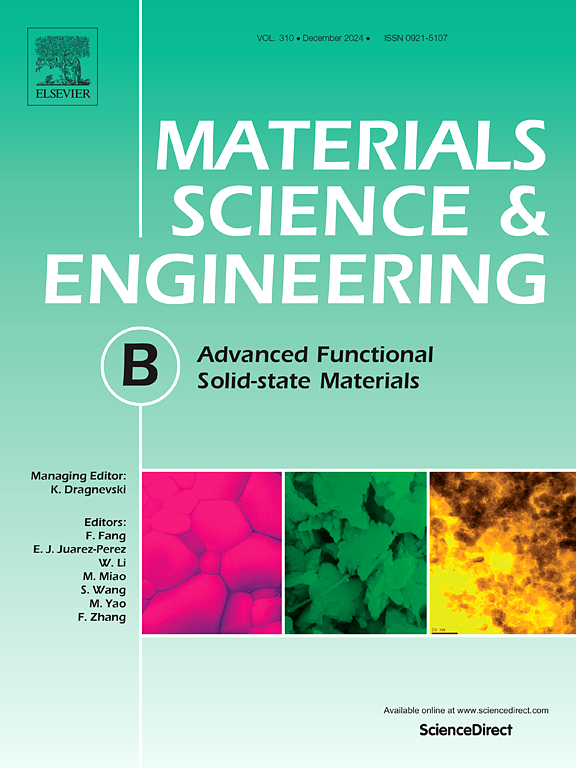Bi3+-induced dual-color luminescence in Eu3+ substituted Y2WO6 magnetic nanophosphors for anti-counterfeiting applications
IF 3.9
3区 材料科学
Q2 MATERIALS SCIENCE, MULTIDISCIPLINARY
引用次数: 0
Abstract
The demand for advanced materials in anti-counterfeiting drives research into nanophosphors. Building on prior work [1] that identified strong reddish-orange luminescence in (Y1-x)2WO6:xEu3+ nanophosphors for xEu3+=0.07, this study explores the structural, optical and magnetic properties (Y1-x-y)2WO6:xEu3+:yBi3+ (xEu3+ = 0.07; yBi3+ = 0.01, 0.03, 0.05) nanophosphors synthesized via the solution combustion technique. The nanophosphors exhibit a monoclinic structure with wire-like morphology. Raman and FTIR spectroscopy reveal bonding details, while UV–vis spectra indicate strong UV absorbance with Bi3+ incorporation. Photoluminescence analysis identifies the xEu3+ = 0.07:yBi3+ = 0.03 composition as optimal for stable dual luminescence, exhibiting reddish-orange and bright pink emission under 345 nm and 365 nm excitation, respectively. Additionally, the phosphors display soft magnetic properties. Physical and chemical stability tests further confirm the composition potential as dual fluorescent magnetic pigment for anti-counterfeiting applications, offering a visually distinctive and robust security feature. The combined optical and magnetic characteristics position the (Y1-x-y)2WO6:0.07Eu3+:0.03Bi3+ nanophosphor as a promising pigment for security inks in anticounterfeit applications.
求助全文
约1分钟内获得全文
求助全文
来源期刊

Materials Science and Engineering: B
工程技术-材料科学:综合
CiteScore
5.60
自引率
2.80%
发文量
481
审稿时长
3.5 months
期刊介绍:
The journal provides an international medium for the publication of theoretical and experimental studies and reviews related to the electronic, electrochemical, ionic, magnetic, optical, and biosensing properties of solid state materials in bulk, thin film and particulate forms. Papers dealing with synthesis, processing, characterization, structure, physical properties and computational aspects of nano-crystalline, crystalline, amorphous and glassy forms of ceramics, semiconductors, layered insertion compounds, low-dimensional compounds and systems, fast-ion conductors, polymers and dielectrics are viewed as suitable for publication. Articles focused on nano-structured aspects of these advanced solid-state materials will also be considered suitable.
 求助内容:
求助内容: 应助结果提醒方式:
应助结果提醒方式:


